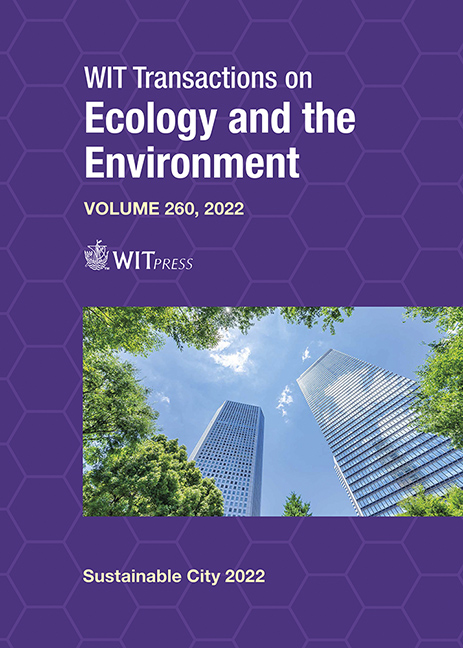COMPOSITE INDICATORS FOR ASSESSING THE CARBON EMISSION REDUCTION ON BIO-ECORESILIENCE OF RESIDENTIAL BUILDINGS
Price
Free (open access)
Transaction
Volume
260
Pages
10
Page Range
289 - 298
Published
2022
Paper DOI
10.2495/SC220241
Copyright
Author(s)
SARA H. ABOUBAKR, AMIRA A. FATHI, ALI FOUAD BAKR
Abstract
In the 21st century, extreme precipitation and temperature are expected due to climate change. This climate change is induced by carbon emissions, in which residential buildings contribute significantly. We propose a kinetic green façade with a double frame. The first frame is an outdoor frame of biovegetation, while the second frame is built of green construction materials with isolated glass. This kinetic skin is intended to mitigate extreme temperature and use extreme precipitation. This system integrates three state-of-the-art approaches: biophilic, ecological and resilience to compact climate changes hazards. In this paper, we established bio-eco-resilience composite indicators (BER-CIs) to assess this modification for existing residential building in the New Borg Al-Arab City (NBC), Egypt in five different scenarios. We find that scenario 5 where the highest vegetation footprints in which all the harmful and unhealthy exposure was utilized sustainably, and carbon sequestration is higher than carbon emissions with BER-CIs of 21.64.
Keywords
green façade, carbon emission, carbon sequestration, composite indicator, RIVET, GIS





